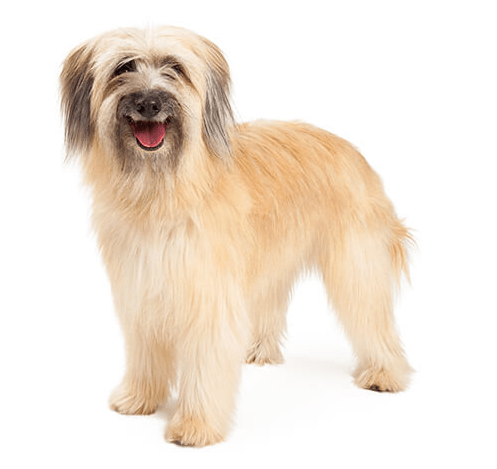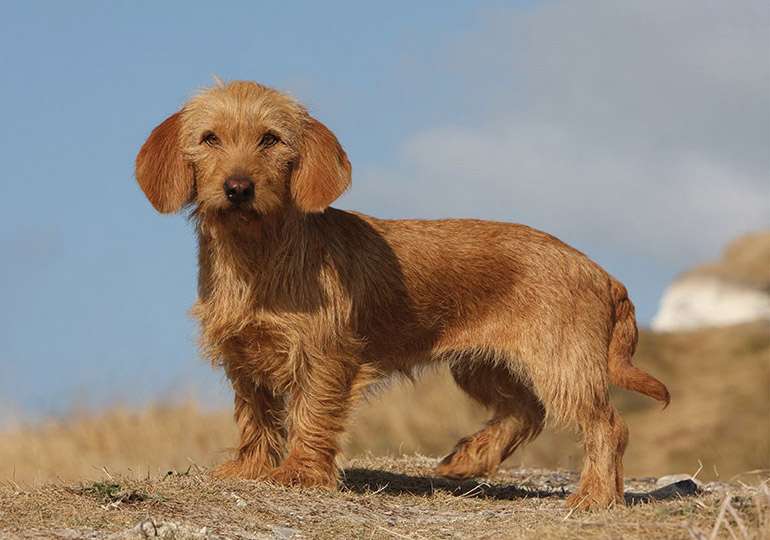
Description
The Pyrenean Shepherd, a tireless herder derived from prehistoric sheepdogs of the Pyrenees highlands, is enthusiastic, playful, and whip-smart. ‘Rough-faced’ and’smooth-faced’ coat types are available in tough, sinewy Pyr Sheps.
There are two coat types available for these hardy, lanky herdsmen: smooth-faced and rough-faced. They are renowned for their ferocious and free-flowing movement. While smooths have short facial hair, a finer-textured coat, and a little longer, pointier muzzle than roughs, roughs have abundant, “windswept” hair above the muzzle. These two sinewy, rectangular breeds come in a wide range of hues and patterns. Pyr Sheps have dark almond-shaped eyes that portray alert and cunning expressions.
Origin/History
The Pyrenees Mountains in the border region between France and Spain are where Pyrenean Shepherds first appeared. By crossing difficult terrain to transport sheep between grazing places, the dogs there obtained their nickname.
Local legend holds that the Pyrenean Shepherd breed originated with the cavemen who first inhabited the area’s mountains. Pyrenean Shepherds and shepherds coexisted during the Middle Ages, according to historical reports.
The dogs frequently assisted Great Pyrenees in their labour; the Great Pyrenees guarded the flocks as the Pyrenean Shepherds moved them. The agile, tiny breed served as search and rescue dogs and military couriers during World War I.
Pyrenean Shepherd and Great Pyrenees enthusiasts created the Reunion des Amateurs des Chiens Pyreneens, a group devoted to the preservation of the breeds, as a result of their abilities during the war. In 1926, the Pyrenean Shepherd received breed recognition from the French Kennel Club.
Temperament
Pyrenean Shepherds enjoy working hard. These sharp-witted, inquisitive dogs have such powerful instincts for herding that they can frequently control flocks without assistance from a shepherd or an older dog.
Care
Nutrition
Feed Pyrenean Shepherds premium dog food that is suitable for their age (puppy, adult, senior). Think about a diet designed for breeds that are active. To avoid overfeeding your Pyrenean Shepherd, portion out their food using a measuring cup and keep rewards to no more than 10% of their daily calories.
Grooming
Regular grooming is necessary for Pyrenean Shepherds. To prevent mats and tangles, brush their hair once a week. To prevent shedding, remove dead undercoat, and maintain the best-looking coats, use a pin brush. Additionally, Pyrenean Shepherds require frequent ear cleanings, nail trimmings, and dental care that includes both at-home brushing and expert cleanings.
Exercise
These active dogs need a lot of physical activity. When not working, Pyrenean Shepherds like being outdoors and engaging in activities like swimming, hiking, and walking to help them use their surplus of energy. Their physical and mental wellbeing depend on exercise. Additionally, Pyrenean Shepherds excel in dog sports like lure coursing, agility, and obedience contests.
Training
The Pyrenean Shepherd is a smart, energetic, and obedient dog. They respond well to teaching using a clicker and other rewards-based methods. Teaching Pyrenean Shepherds new tricks and simple instructions will stimulate their minds, keeping the breed happy and healthy.
Description
The Pyrenean Shepherd, a tireless herder derived from prehistoric sheepdogs of the Pyrenees highlands, is enthusiastic, playful, and whip-smart. ‘Rough-faced’ and’smooth-faced’ coat types are available in tough, sinewy Pyr Sheps.
There are two coat types available for these hardy, lanky herdsmen: smooth-faced and rough-faced. They are renowned for their ferocious and free-flowing movement. While smooths have short facial hair, a finer-textured coat, and a little longer, pointier muzzle than roughs, roughs have abundant, “windswept” hair above the muzzle. These two sinewy, rectangular breeds come in a wide range of hues and patterns. Pyr Sheps have dark almond-shaped eyes that portray alert and cunning expressions.
Origin/History
The Pyrenees Mountains in the border region between France and Spain are where Pyrenean Shepherds first appeared. By crossing difficult terrain to transport sheep between grazing places, the dogs there obtained their nickname.
Local legend holds that the Pyrenean Shepherd breed originated with the cavemen who first inhabited the area’s mountains. Pyrenean Shepherds and shepherds coexisted during the Middle Ages, according to historical reports.
The dogs frequently assisted Great Pyrenees in their labour; the Great Pyrenees guarded the flocks as the Pyrenean Shepherds moved them. The agile, tiny breed served as search and rescue dogs and military couriers during World War I.
Pyrenean Shepherd and Great Pyrenees enthusiasts created the Reunion des Amateurs des Chiens Pyreneens, a group devoted to the preservation of the breeds, as a result of their abilities during the war. In 1926, the Pyrenean Shepherd received breed recognition from the French Kennel Club.

Temperament
Pyrenean Shepherds enjoy working hard. These sharp-witted, inquisitive dogs have such powerful instincts for herding that they can frequently control flocks without assistance from a shepherd or an older dog.
Care
Nutrition
Feed Pyrenean Shepherds premium dog food that is suitable for their age (puppy, adult, senior). Think about a diet designed for breeds that are active. To avoid overfeeding your Pyrenean Shepherd, portion out their food using a measuring cup and keep rewards to no more than 10% of their daily calories.
Grooming
Regular grooming is necessary for Pyrenean Shepherds. To prevent mats and tangles, brush their hair once a week. To prevent shedding, remove dead undercoat, and maintain the best-looking coats, use a pin brush. Additionally, Pyrenean Shepherds require frequent ear cleanings, nail trimmings, and dental care that includes both at-home brushing and expert cleanings.
Exercise
These active dogs need a lot of physical activity. When not working, Pyrenean Shepherds like being outdoors and engaging in activities like swimming, hiking, and walking to help them use their surplus of energy. Their physical and mental wellbeing depend on exercise. Additionally, Pyrenean Shepherds excel in dog sports like lure coursing, agility, and obedience contests.
Training
The Pyrenean Shepherd is a smart, energetic, and obedient dog. They respond well to teaching using a clicker and other rewards-based methods. Teaching Pyrenean Shepherds new tricks and simple instructions will stimulate their minds, keeping the breed happy and healthy.
Table





